African priests fill American pulpits as 'reverse missionaries,' revitalizing parishes
CHICAGO – On a sunny morning at St. Benedict the African Catholic Church on Chicago’s South Side, the Rev. Rukulatwa Kiiguta stepped into the center of the sanctuary to preach.
“My brothers and sisters, yes, we do have this mission of saving souls by bringing them to Christ,” he told the assembly, looking around at the 50-odd people gathered in the Black Catholic parish, many of whom nodded as he spoke.
Kiiguta moved to the U.S. from his home in Tanzania for exactly that reason. After meeting an American priest who had traveled to East Africa to recruit seminarians, Kiiguta joined the ranks of about 15 African priests in Chicago. He sees his work in the Englewood neighborhood – where many families struggle to make ends meet, but Catholics pour their hearts into their parish – as God’s will.
This missionary’s story reflects a fundamental shift in the American Catholic church. After decades of U.S. missionaries traveling to Africa to convert and preach, the trend is reversing: Across the country, parishes now rely on the ministry of international priests, many from East Africa and Nigeria.
The Archdiocese of Chicago, one of the biggest American dioceses, is a case in point – almost two-thirds of its priests under 50 were born outside the U.S.
It’s difficult to estimate the number of foreign missionaries in the U.S. because their paths are so diverse. But recent studies by Georgetown University’s Center for Applied Research in the Apostolate (CARA) estimated the U.S. hosts some 6,600 international priests and more than 4,000 international nuns.
Meanwhile, the number of American priests is tumbling: there are 10,000 fewer priests now than there were two decades ago.
Sister Thu Do, a research associate at CARA, described the trend as “reverse missionary action.” She said the number of international priests and sisters has likely grown since the Georgetown center’s last study in 2019.
“Because of the shortage of vocations in the priesthood as well as in religious life, religious institutes and dioceses here in the U.S. go outside of the U.S. to recruit new members,” she said.
More: Pope Francis approves blessings for same-sex couples if the rituals don’t resemble marriage
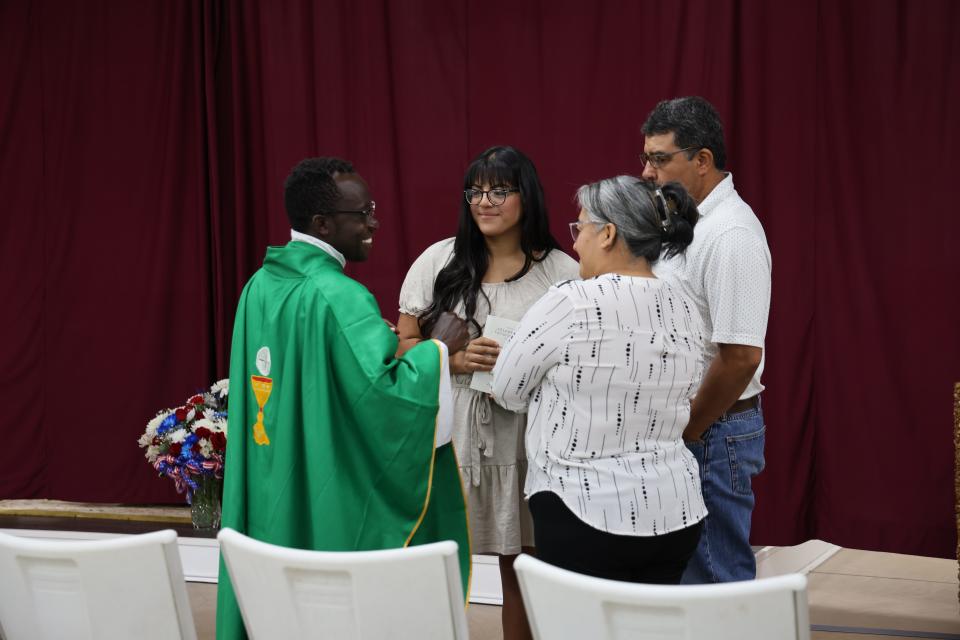
A century-old religious order changes with the times
Patrick Okok, a 32-year-old seminarian, is one such young man.
Okok grew up in Sega, a rural Kenyan town an eight-hour drive outside Nairobi. Now, six years into his training and 8,000 miles from home, he’s living in Chicago, where tempratures fell into the 20s last week, preparing to become a missionary with the Maryknoll Fathers and Brothers.
Maryknoll was founded in the United States over a century ago with the unique mission of sending its members permanently abroad to share their religion. Missionary groups like Maryknoll are a major reason for Catholicism’s widespread popularity in East Africa today.
But as American vocations have dwindled, Maryknoll’s identity has had to change, too. In 2016, the order began accepting applicants from other countries. Okok, who joined in 2017, was among the first international candidates to join the community.
Now, the order’s international numbers are thriving, according to the Rev. Mike Snyder, a Maryknoll priest. Almost 20 men are training to join the community now, with over two dozen others in East Africa contemplating entry into Maryknoll’s seminary.
Related: Kenyan nuns take over hospitals after battle with American priest
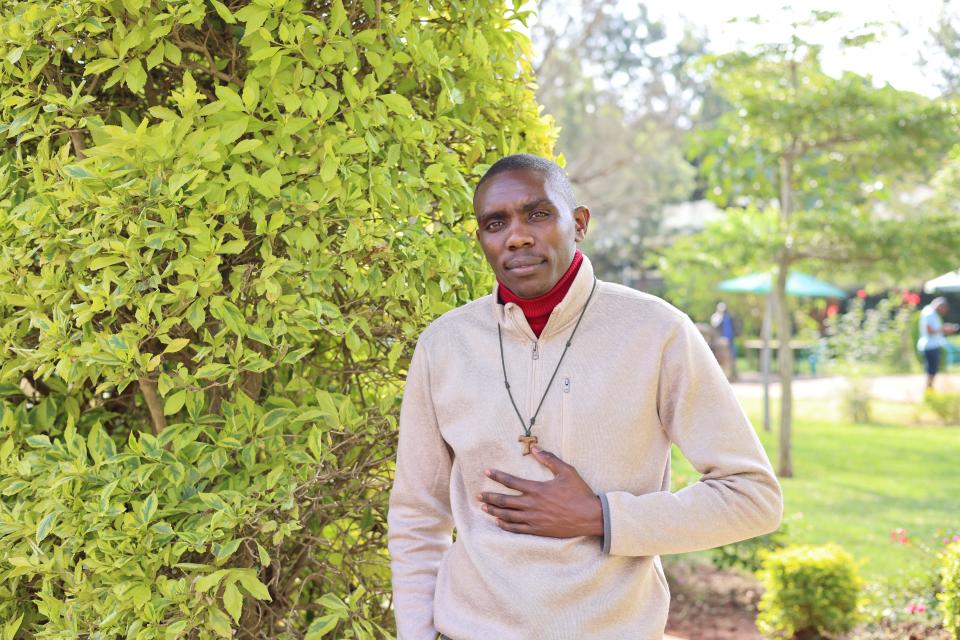
An 8,000 mile journey of faith
A sincere, gentle-mannered man who’s quick to smile, Okok lives in a kaleidoscopically diverse household of Maryknoll members. Men from around the globe – including Mexico, Tanzania and Hong Kong – share meals, prayers, and coursework in Chicago’s Hyde Park neighborhood. The housemates have learned to navigate their differences in living habits, languages and cultures, though Okok acknowledged it’s not always easy.
“The hardest part is also the fun part,” he said, laughing. “It has both sides like a coin, living in community. We are all from different backgrounds, different upbringings. You have to adjust a lot, moving in and living together.”
Okok will soon profess a permanent oath to the order, promising the rest of his life to the community. He hopes to be ordained a deacon in 2024, and a priest the year after that. Once he is ordained, he will receive his mission assignment, where he will embark on his new life of service.
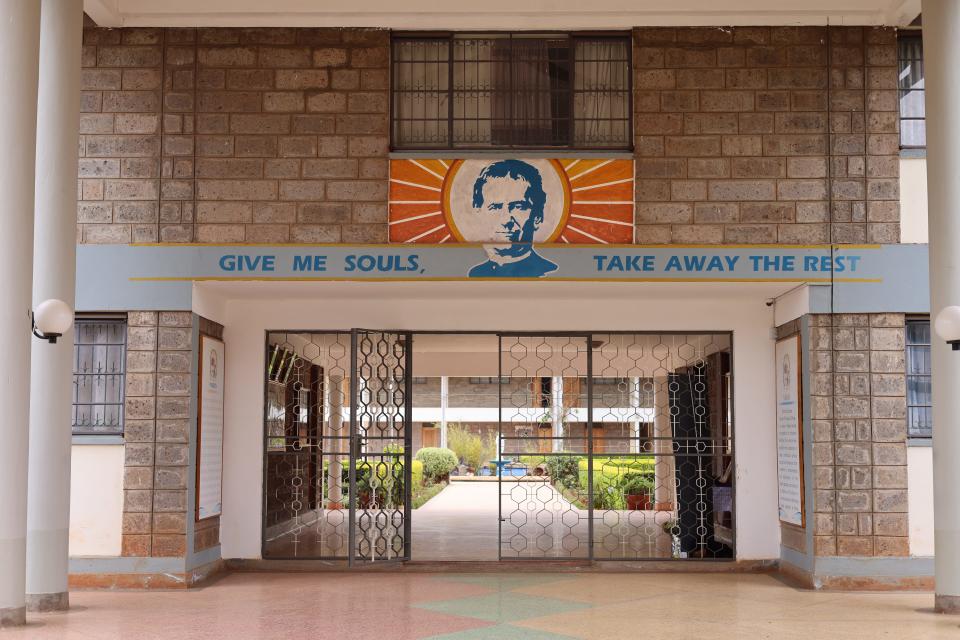
Embracing a lifetime of service
To join a missionary order like Maryknoll is to commit to a life spent far from family. The order finances visits back to Kenya only once every three years, and though Okok doesn’t yet know where he will be missioned, it will certainly not be anywhere on the continent of Africa – he believes he will be sent somewhere in Latin America or Asia.
“I miss home,” he said. “I miss my friends at home. But it’s also necessary that I’m where I am, because of the work and the service to people.”
It’s a far cry from his childhood in Sega, where he first imagined becoming a priest. In middle school, he noticed the altar servers in his home parish, drawn to the work they did during mass. He paid close attention to the priests he met, studying the way they preached, how they connected with people, the respect they were given.
“During holidays, I would visit different congregations in different cities: Nairobi, Kisumu,” he said. “I was in touch with about seven different congregations while in high school.”
As a college student in Nairobi, Okok got to know the Catholic chaplain, a Maryknoll priest, and was surprised to find himself drawn to the missionary order.
In one Chicago parish, 'a wonderful, blessed addition'
Life in Maryknoll has given Okok an education in the cross-cultural differences of global Catholicism and shown him the host of challenges facing the American church: fewer priests and irreligious young people, financial struggles and the scars of the sexual abuse crisis.
It’s a different world from the Kenyan church, where masses lasting two hours are packed and people dance and sing, praying with their whole bodies; where priests are revered as leaders in the community and treated with high respect. But Chicago Catholics welcome the international priests’ enthusiasm.
“They’re a wonderful, blessed addition to St. Benedict,” parishioner Kurt Davis said of the Maryknoll seminarians. Kiiguta, praised Okok for inviting more young people from the neighborhood to volunteer at the parish on Sundays.
Around the country, Catholic communities are responding similarly to missionaries’ presence. They’re “full of energy and a sense of mission,” Do, the Georgetown University researcher, said. “With the presence of international priests and sisters, the church will be more diverse and more welcoming.”
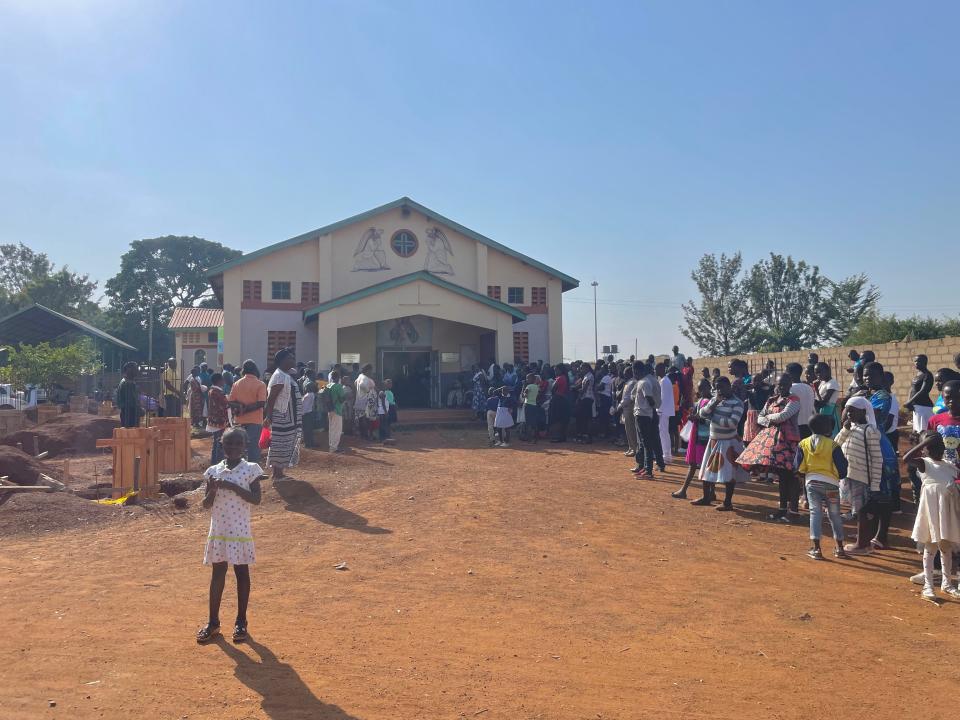
Where the churches are all packed
While many U.S. Catholic parishes stagnate, faith across the globe in Kenya is a study in contrasts.
On a hot summer morning in Siaya, in rural western Kenya near Okok’s hometown, just about everyone was on their way to church. The roads were crowded with pedestrians of all ages; motorbikes kicked up clouds of red dust as they roared past. Loudspeakers blared, advertising to the neighborhood what was going on inside: the people singing, the preachers shouting exhortations in Swahili and the local dialect, Luo.
The churches in Siaya come in all shapes and sizes: from mud chapels to modest corrugated tin buildings to sturdier brick or concrete churches. But they are ubiquitous, and on Sundays, they are full.
St. Pantaleon Catholic Church, a white building perched atop a hill, was no exception. A small megaphone hung above the entrance, tinnily broadcasting the progress of an early-morning service to the 500 people who stood outside waiting for the next mass to begin. They were dressed in their Sunday best: children twirled in tulle skirts; women wore hair wraps adorned with images of Jesus or a favorite saint. The choir huddled under a tree for one last rehearsal.
When the doors finally opened, one crowd replaced the last, cramming shoulder to shoulder into the pews.
Kenya's 'Little Vatican'
An exuberant conductor – a tall, skinny, smiling young man – bounced up and down as he led the music, gesturing to the tenors to sing louder. The congregation needed little encouragement: The liturgy was over two hours of hymns and prayers in which everyone participated, with dancing and laughter and ululation. Colorful Christmas lights blinked around a statue of Mary.
Families aren’t rich in Siaya, but when it was time to bring the traditional bread and wine to the altar, several dozen people got up to offer gifts from their homes: big bunches of bananas, baskets of tomatoes.
Then the parish took up a collection to support a local seminary student on his way back to classes in the capital. Standing at the front of the church, he smiled and told the people about his missionary training. In Nairobi, his seminary is in a suburb so dense with Catholic orders that it’s nicknamed the “little Vatican.”
The church’s future can be glimpsed in that Nairobi neighborhood, where one gated driveway after another proclaims aspiring priests and nuns live within: the Apostles of Jesus, the Little Missionary Sisters of Charity, the Sons of Divine Providence, and a myriad of others.
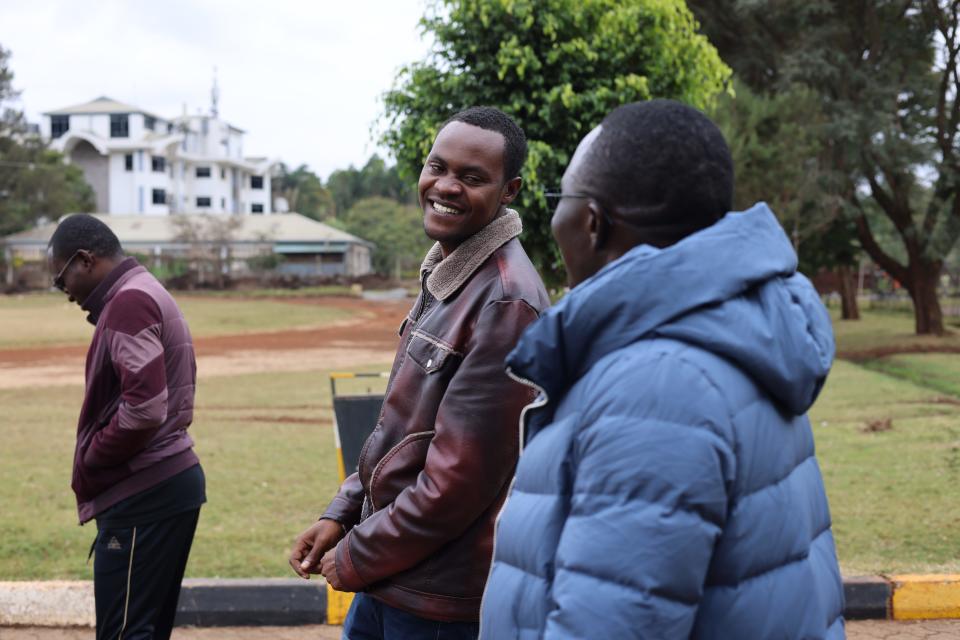
'Once I've committed myself, I cannot refuse'
Michael Mong’are Ooga, 30, belongs to the Franciscan Missionaries of Hope, a community established in Kenya in 1999. Its priests are dedicated to serving poor and marginalized people in Kenya and in countries around the world, Ooga said. In the U.S., the missionaries work in states in the deep South, including Alabama, Texas and Louisiana.
He’s nine years into his training, and won’t know until his ordination where he’ll be sent – that decision is up to his superiors, part of the vow of obedience priests take. But Ooga is committed to serving God as a priest, wherever it takes him.
“Once I’ve committed myself, I cannot refuse,” he said.
“There is need,” Ooga said. “There is a scarcity of priests.”
For now, that commitment means small-town Indiana, where he’ll spend four years studying philosophy before taking his vows as a priest.
In August, Ooga bid farewell to his family in the western Kenyan town of Kisii. He packed his suitcase. He left behind the familiarity of life in Kenya: the urban bustle of Nairobi, the mild tropical weather, the fruit trees growing in the garden of his seminary.
Then, like thousands of others, he made the leap of faith and boarded a plane to travel to the United States for the first time.
This article originally appeared on USA TODAY: Catholic priests from Africa are coming to the U.S. as missionaries

